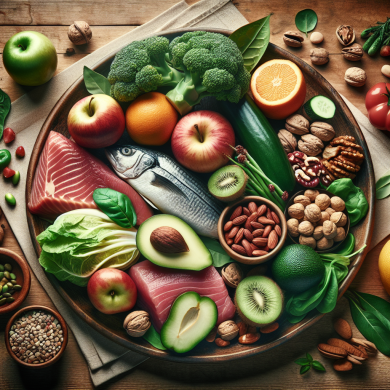Discover Top Paleo-Friendly Restaurant Options
Introduction to the Paleo Diet
The Paleo diet, often referred to as the “caveman diet,” is a nutritional plan based on the presumed diet of Paleolithic humans. This diet focuses on consuming whole foods that were likely available to our ancestors, such as meat, fish, fruits, vegetables, nuts, and seeds, while avoiding processed foods, grains, legumes, and dairy. The primary aim of the Paleo diet is to return to a way of eating that’s more in sync with our evolutionary heritage, which is believed to lead to improved health outcomes, including better digestive health, weight loss, and reduced risk of chronic diseases.
The Rise of Paleo-Friendly Restaurants
As the popularity of the Paleo diet has surged, so too has the demand for dining options that cater to this lifestyle. More and more restaurants are offering Paleo-friendly dishes, allowing those who follow the diet to enjoy eating out without compromising their nutritional principles. These establishments provide a menu that aligns with the Paleo philosophy, often emphasizing fresh, organic, and locally sourced ingredients.
Identifying Paleo-Friendly Restaurants
Finding a truly Paleo-friendly restaurant can be a challenge, as not all eateries label their menus with clear dietary information. However, several indicators can help you identify a potential Paleo haven:
Focus on Fresh and Whole Foods
Restaurants that highlight fresh, whole foods and prioritize organic ingredients are likely to offer Paleo-friendly options. Look for menus that emphasize grass-fed meats, wild-caught fish, fresh vegetables, and healthy fats like avocado and coconut oil.
Flexible Menu Options
Establishments that allow for customization of meals are ideal for Paleo diners. This flexibility enables you to substitute or remove non-Paleo ingredients such as legumes, grains, or dairy.
Ethical and Sustainable Sourcing
A commitment to ethical and sustainable sourcing is a hallmark of many Paleo-friendly restaurants. These places often source their ingredients from local farms and prioritize animal welfare, ensuring that their offerings are both healthy and environmentally responsible.
Top Paleo-Friendly Restaurant Chains
While independent restaurants can offer unique and tailored Paleo options, several chains have emerged that consistently cater to Paleo preferences:
Chipotle Mexican Grill
Chipotle offers a highly customizable menu, allowing diners to create meals that fit the Paleo guidelines. Opt for a salad bowl with carnitas, chicken, or barbacoa, and load it with vegetables, guacamole, and salsa. Skip the beans and rice to keep it Paleo-friendly.
Whole Foods Market
Known for its extensive salad and hot food bars, Whole Foods Market is a haven for Paleo eaters. You can find a variety of meats, vegetables, and healthy fats to create a balanced meal. Whole Foods also carries a selection of Paleo-approved snacks and meals in their grocery section.
True Food Kitchen
True Food Kitchen offers a menu inspired by Dr. Andrew Weil’s anti-inflammatory food pyramid, which aligns closely with Paleo principles. Their menu includes grass-fed burgers, sustainably sourced fish, and an array of seasonal vegetables.
Independent Paleo-Friendly Restaurants
Independent restaurants often offer unique and innovative Paleo options, driven by passionate chefs and owners. Here are a few standout establishments:
Caveman Cafeteria (Denver, CO)
This Denver-based eatery offers a diverse menu with a strict adherence to Paleo principles. With dishes like the “Hunter-Gatherer Platter” featuring wild game, and “Primal Pizza” with a nut-based crust, Caveman Cafeteria provides a true Paleo dining experience.
The Primal Pantry (London, UK)
Located in the heart of London, The Primal Pantry is renowned for its dedication to Paleo cuisine. Their menu features items such as grass-fed beef burgers, sweet potato wedges, and a variety of vegetable-based sides, ensuring a wholesome and satisfying meal.
Hu Kitchen (New York, NY)
Hu Kitchen is a pioneer in the Paleo dining scene, offering a wide range of delicious and nutritious meals. From organic rotisserie chicken to wild-caught fish and grain-free baked goods, Hu Kitchen exemplifies the best of Paleo dining in an urban setting.
Crafting a Paleo-Friendly Meal at Non-Paleo Restaurants
Even if a restaurant doesn’t specifically cater to Paleo diners, you can often craft a meal that fits your dietary needs. Here are some tips for doing so:
Choose Simple Proteins
Opt for grilled or roasted meats, such as steak, chicken, or fish, and request that they be cooked with minimal seasoning or oil. Avoid breaded or fried options.
Substitute Sides
Replace non-Paleo sides like fries or rice with vegetables or a side salad. Most restaurants are happy to accommodate these requests.
Get Creative with Salads
Salads can be a great Paleo option, especially when you add protein. Ask for extra vegetables, nuts, and seeds, and choose an olive oil or vinaigrette dressing.
Conclusion: Savoring Paleo-Friendly Dining Experiences
Dining out while adhering to the Paleo diet doesn’t have to be a daunting task. With the growing number of Paleo-friendly restaurants and the flexibility to adapt menu items, you can enjoy a wide variety of delicious meals that align with your nutritional goals. By choosing establishments that prioritize fresh, whole foods and ethical sourcing, and by customizing your meals to fit Paleo guidelines, you can savor every dining experience with confidence.
Final Thoughts
As the Paleo diet continues to gain traction, the demand for Paleo-friendly dining options will likely grow. Whether you’re enjoying a meal at a dedicated Paleo restaurant or crafting a meal to fit your needs at a non-Paleo establishment, there are countless ways to enjoy diverse and satisfying meals while staying true to your dietary principles. Embrace the adventure of discovering new flavors and restaurants that align with your Paleo lifestyle, and relish the opportunity to nourish your body with wholesome, delicious food.















Add comment